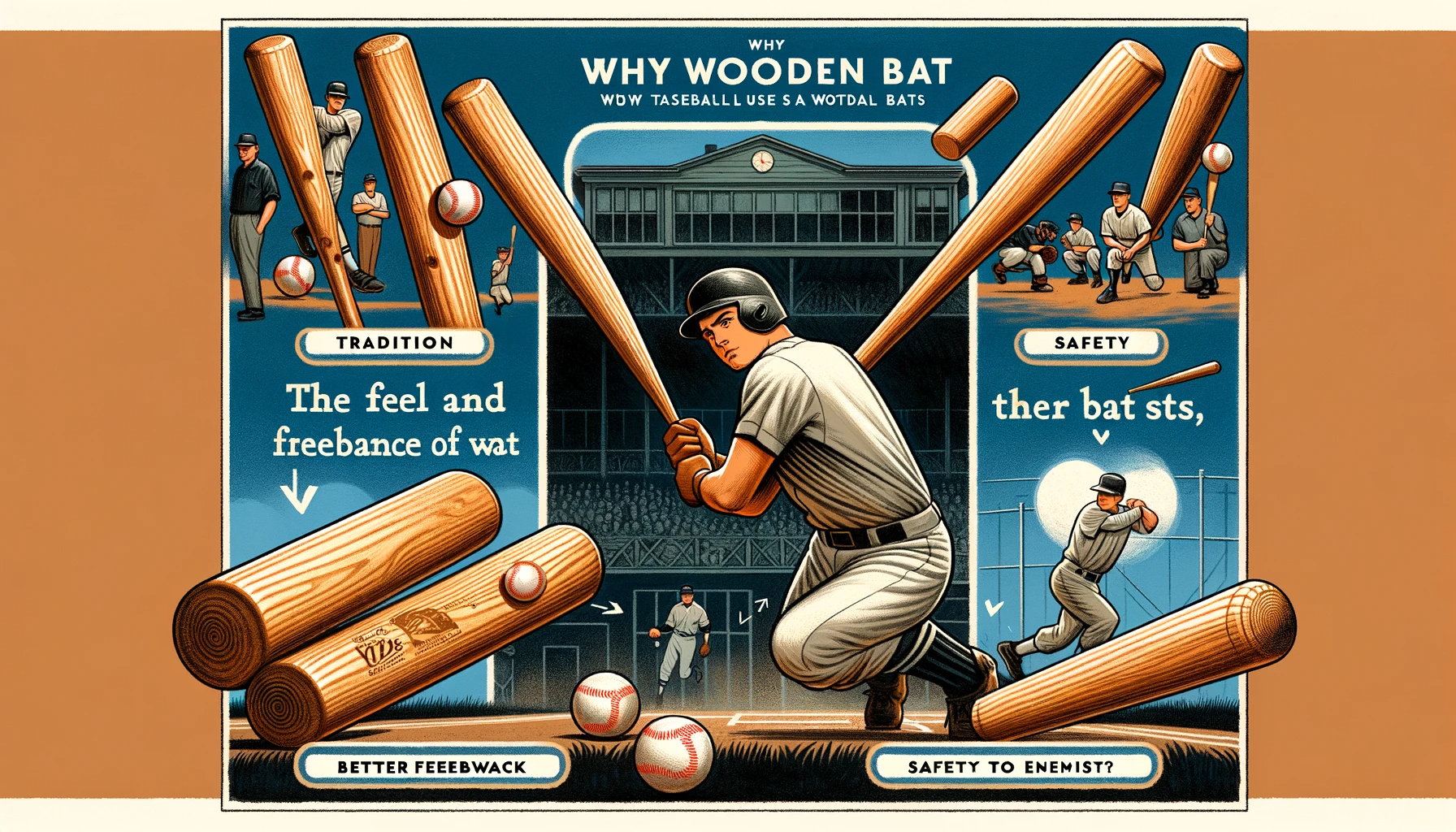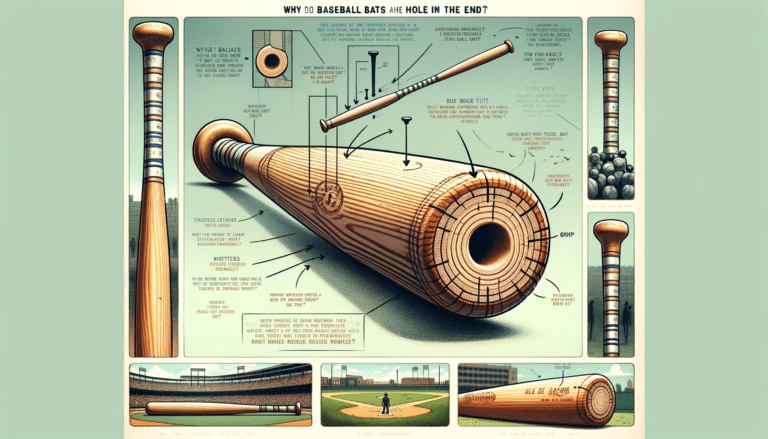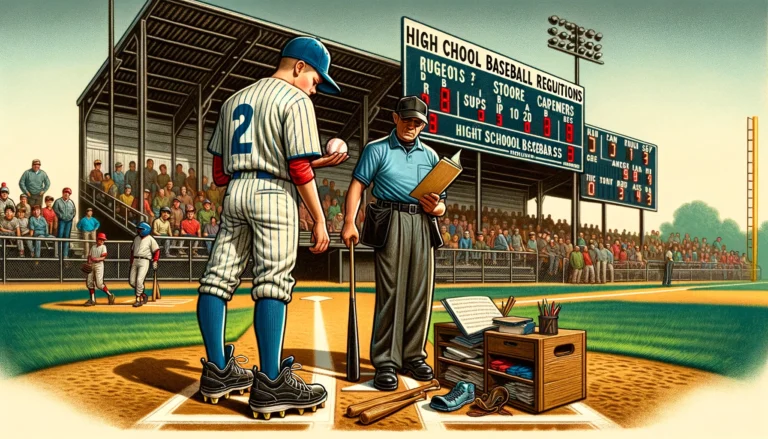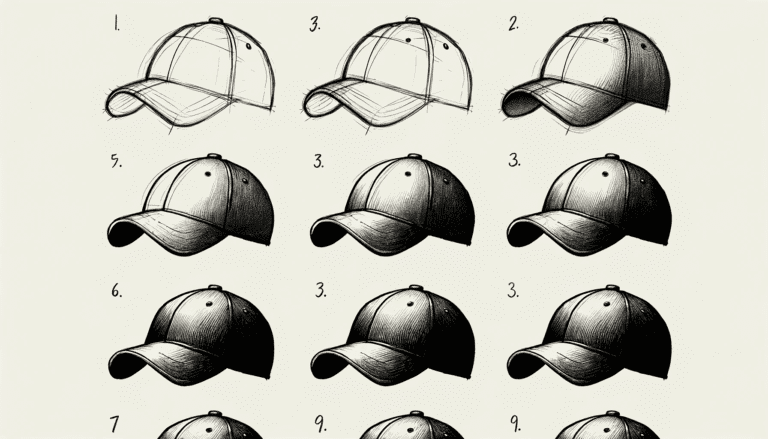Why Do Baseball Players Use Wooden Bats?
Why Do Baseball Players Use Wooden Bats? Baseball players choose wooden bats for the reasons of tradition, performance, and regulations. While aluminum and composite bats, might seem tempting with their durability, wooden bats offer a classic feel and sound that resonates with the essence of the game.
Not only that, but wooden bats require hitters to refine their technique, enhancing skill development. Moreover, many youth leagues still mandate the use of wooden bats, preserving the authenticity of the sport.
So, why do professional baseball players still use wooden bats? It’s a combination of heritage, skill refinement, and adherence to regulations that make wooden bats the preferred choice on the diamond. You may read the guide on Why Are Baseball Bats So Expensive
Key Takeaways
- White Ash has been historically favored for baseball bats, but Red Maple has risen in prominence due to the ash borer crisis.
- The crafting of wooden bats, especially in Cincinnati, is an art form that values the material’s natural properties over synthetic alternatives.
- Statistical analysis, including OPS and wOBA, highlights the offensive prowess of players like Brandon Simms and underscores the importance of wooden bats in the game.
- Baserunning and fielding are critical, yet often overlooked, elements of baseball where players like the Lumberjacks and Dukes excel and significantly influence game outcomes.
- Wooden bats hold profound cultural significance in baseball, offering a sensory experience and aesthetic appeal that aluminum bats cannot match, and are celebrated in popular culture and collectibles.
The Legacy of Ash and the Rise of Maple
White Ash: The Traditional Choice for Bats
White Ash has long been the wood of choice for baseball bats, prized for its optimal balance of lightweight flexibility and durable strength.
This species, Fraxinus Americana, has not only been integral in the realm of sports but also in various other applications, including tool handles and furniture.
The process of selecting and crafting White Ash into solid wood for a baseball bat is a testament to the wood’s workability and resilience.
Bats made from this timber are known for their smooth finish and consistent grain, which are essential for a reliable performance at the plate.
Unfortunately, the White Ash population has suffered greatly due to the Emerald Ash Borer, an invasive pest that has wreaked havoc on ash trees across the eastern United States.
This crisis has led to a significant decline in the availability of quality ashwood, prompting the industry to seek alternatives such as Red Maple.
The Emerald Ash Borer Crisis and Its Impact
The Emerald Ash Borer (EAB) has unleashed an ecological crisis on White Ash trees, a species once ubiquitous in the eastern United States.
The larvae of this invasive insect feed on the inner bark, disrupting the trees’ vital functions and leading to widespread mortality.
The evidence of their destruction is etched into the trees themselves, with visible ‘squiggly’ channels marking the larvae’s feeding paths.
The outbreak’s origins at places like Crooked Creek Park underscore the unintended consequences of human activity, such as transporting firewood, on natural ecosystems.
The rapid spread of the EAB has not only affected the availability of quality wood for bats but also serves as a stark reminder of the fragility of our forests.
Despite the devastation, signs of resilience offer a glimmer of hope:
- Scattered adult ash trees continue to survive, defying the odds.
- Younger trees, not yet targeted by the EAB, grow stronger, hinting at a potential recovery.
In the face of this adversity, the perseverance of the White Ash and the dedication of conservationists inspire optimism for the species’ future in our forests.
Red Maple: The New Favorite in the Batter’s Box
The shift from White Ash to Red Maple bats in baseball is a testament to the sport’s adaptability and players’ search for a competitive edge.
Red Maple’s rise in popularity can be attributed to its hardness and resilience, which became particularly appealing after the Emerald Ash Borer crisis threatened the supply of traditional ash bats.
- Red Maple bats are known for their durability and the ability to transfer more power to the ball.
- Players have reported a better feel and a ‘crisper’ sound when hitting with maple, enhancing the sensory experience of the game.
- The trend towards maple was notably influenced by high-profile players who demonstrated the wood’s effectiveness on the field.
As the use of Red Maple bats continues to grow, it’s clear that this species has secured its place in the modern batter’s box, offering a blend of performance and aesthetic appeal that resonates with both players and fans alike.
Read Also: How to Hold a Baseball Bat Right Handed
The Art of Crafting Wooden Bats
The Handmade Process: From Timber to Treasure
The journey from raw timber to a finished baseball bat is a testament to craftsmanship and precision.
Each bat starts as a carefully selected billet of wood, chosen for its straight grain and ideal moisture content.
The process involves several meticulous steps:
- The wood is first rough-cut to the approximate shape of a bat.
- It is then turned on a lathe, where skilled artisans shape it to the exact specifications required.
- Sanding and finishing follow, ensuring a smooth surface and the perfect grip.
This handmade approach allows for a level of detail and customization that machines cannot replicate.
Despite the rise of technology, the essence of a handmade bat remains distinct. The certification to produce bats for Major League Baseball players is a rigorous process, reflecting the high standards required for professional play.
Crafting a bat that meets these standards is not just about following steps; it’s about infusing each piece of the same bat with a legacy of quality and a spirit of the game.
Material Matters: Why Wood Wins Over Aluminum
The debate between wooden and aluminum bats is a classic in baseball circles. Wooden bats are celebrated for their traditional feel and performance, offering a level of craftsmanship that an aluminum bat simply cannot match.
Here are some reasons why wood remains the preferred choice:
- The natural grain of wood provides a unique flexibility and strength that can affect the ball’s trajectory in a way that metal bats cannot.
- Wood bats tend to be heavier, which can lead to a more disciplined swing and better training for players.
- The iconic crack of a wooden bat hitting a ball is a sound deeply ingrained in the culture of the sport.
Despite the durability and cost-effectiveness of aluminum bats, as noted by Zack Casciato in his article on metal bats in Division 1 College Baseball, the wooden bat’s role in college baseball players’ goes beyond mere economics.
It’s about preserving the essence of the game, where each bat tells a story and connects players to the rich history of baseball.
The Cincinnati Connection: A Hub for Bat Manufacturing
Cincinnati, Ohio, has carved out a unique niche in the baseball world as a center for bat manufacturing.
This city, known for its rich sporting history, is home to skilled artisans who handcraft bats from high-quality ash wood, ensuring each piece is a testament to the game’s heritage.
The meticulous craftsmanship that goes into each bat is a point of local pride and a contribution to baseball’s enduring legacy.
The process of creating these bats involves several key steps:
- Selecting the finest ash wood, known for its durability and resilience.
- Shaping the wood into a precise, balanced form, tailored to a player’s preference.
- Finishing each bat with a clear lacquer for protection and a smooth feel.
In addition to the production of traditional bats, Cincinnati’s bat makers have also adapted to the changing preferences of players, incorporating new materials and techniques while maintaining the classic approach.
This blend of tradition and innovation keeps Cincinnati at the forefront of the baseball industry.
Read Also: Why Do Baseball Bats Have a Hole in the End
The Statistical Symphony of Swinging Lumber
Deciphering Batting Averages and On-Base Percentages
Understanding the nuances of batting averages and on-base percentages (OBP) is crucial for evaluating a player’s offensive performance.
Batting average is a straightforward metric, representing the ratio of a player’s hits to their at-bats.
However, it doesn’t account for walks or hit-by-pitches, which is where OBP comes into play, offering a more comprehensive view by including these factors.
- Batting average highlights a player’s ability to hit the ball successfully.
- On-base percentage reflects their overall capacity to reach base, whether by hits, walks, or being hit by a pitch.
Selecting the right bat is pivotal; a well-chosen bat can enhance a player’s batting average.
Conversely, the wrong bat can lead to mis-hits, weak swings, and a lower on-base percentage. Comfort and confidence with a bat contribute significantly to a player’s success at the plate.
Slugging It Out: The Importance of OPS and wOBA
In the intricate dance of baseball statistics, two acronyms stand out for their ability to encapsulate a player’s prowess at the plate: OPS and wOBA.
On-base Plus Slugging (OPS) combines a hitter’s ability to reach base with their power to rack up extra-base hits, offering a quick snapshot of overall offensive value.
Meanwhile, Weighted On-Base Average (wOBA) assigns values to each method of reaching base, giving a more nuanced view of a player’s contribution to the team’s scoring potential.
- OPS is a straightforward metric that adds on-base percentage (OBP) to slugging percentage (SLG).
- wOBA, on the other hand, recognizes that not all hits are created equal, weighting each type of hit differently in its calculation.
These metrics are pivotal in assessing a lineup’s threat level. A high OPS indicates a team that can both get on base and hit for power, a combination that keeps pitchers on edge.
A robust wOBA suggests a lineup skilled at efficient scoring, turning walks and singles into runs just as effectively as home runs.
Teams with strong numbers in these categories often find themselves at the top of the standings, proving that while home runs may steal the headlines, OPS and wOBA are the silent architects of victory.
Team Comparisons: Offensive Capabilities in Numbers
Analyzing team statistics is a crucial aspect of understanding a team’s offensive capabilities.
The Detroit Dukes’ approach is characterized by playing a balanced offense, yet it lacks the explosive power seen in some of their rivals. Their playbook suggests a strategy that values consistency over grand slams.
In contrast, the Comets’ batting stats paint a picture of offensive mediocrity. Despite having potential, their numbers indicate a struggle to convert hits into runs, which is essential for winning games.
Meanwhile, the Gamblers exhibit offensive prowess, with stats that reflect their aggressive strategy of swinging for the fences and often connecting.
The Stallions’ stats reveal a team that capitalizes on opportunities, with a run differential that speaks volumes about their efficiency in play. Their Elo rating shows a team on the rise, hinting at a strong performance trend.
Lastly, the Chicago Fire’s offense, while adept at getting on base, desperately needs a power boost to elevate their game.
Read Also: Why Do They Use Aluminum Bats in College Baseball
Baseball’s Unsung Heroes: Baserunning and Fielding
Stealing Bases and Hearts: The Impact of Speed on the Game
In the intricate dance of baseball, speed is a game-changer. Base stealers, like Denver’s silent assassins, can turn the tide of a game with a single sprint.
Their ability to read pitchers and take risks adds a layer of strategy that can catch opponents off-guard.
- The Blues’ baserunning showcases a savvy blend of agility and intelligence, making every inch count.
- Young players often bring a fresh burst of speed, becoming the unsung heroes for teams like the Blizzard.
- The Lumberjacks’ success is partly due to their players’ silent but deadly combination of speed and defensive skill.
However, not all teams harness this potential effectively. The Rustlers’ negative Stolen Base Runs statistic is a stark reminder that poor baserunning can be as detrimental as a screen door on a submarine.
To compete in the high-stakes environment of the ABL, teams must refine their baserunning tactics or risk being left in the dust.
Glove Work: How Fielding Shapes the Outcome
In baseball, the spotlight often shines brightest on the sluggers and pitchers, but it’s the defensive prowess of fielders that can silently dictate the game’s outcome.
The art of the glove is crucial; a player’s ability to make successful defensive plays is reflected in their fielding percentage, a key measure of defensive performance.
- Fielding percentage is calculated by the total number of successful plays divided by the total number of chances (putouts plus assists plus errors).
- Teams with high fielding statistics, like a strong Zone Rating (ZR) and Defensive Efficiency, tend to have a solid defense that contributes significantly to winning games.
- Conversely, a high number of errors can be detrimental, undermining the team’s efforts and giving opponents unearned opportunities.
Fielding excellence isn’t just about avoiding errors; it’s about mastering positions, understanding the nuances of the game, and making split-second decisions that can change the course of an inning or even the entire game.
The best fielders are often unsung heroes, their glove work is a silent game-changer that supports their team’s success.
Highlighting the Standout Performers Beyond the Bat
While the crack of the bat is a signature sound of baseball, the game’s true depth is often revealed when we look beyond batting averages and home runs.
Standout performers in baseball are not only measured by their prowess at the plate but also by their agility on the bases and their finesse in the field.
- Hot Bats in the Blizzard Lineup: This phrase not only captures the essence of players who excel in batting but also hints at their ability to perform under pressure, contributing to their team’s success in crucial moments.
- Denver’s Triple Threat: Reflecting on players who bring a combination of skills to the game, from batting to baserunning to fielding, showcasing the multifaceted nature of baseball talent.
- Blues’ Batting Stars: These players are celebrated for their rhythmic dominance in the batter’s box, but their contributions often extend to making pivotal plays and providing leadership on the field.
The game of baseball is rich with stories of individuals who have made their mark on college games, not just with their bats but with their overall impact on the game.
From the Lumberjacks’ Best Bats to the Comets’ Struggles, each team has players whose performances are etched in the annals of the sport, often influencing the outcome of games in ways that go unnoticed by the casual observer.
Read Also: Why Does Little League Use Aluminum Bats
Conclusion
In conclusion, the preference for wooden bats among baseball players boils down to tradition, control, and the unique feel of the game. While metal bats may offer power, wooden bats have stood the test of time, embodying the essence of the sport.
From Little League to the Major Leagues, the unmistakable crack of a wooden bat and meeting ball remains a timeless symbol of baseball’s enduring legacy.
So, next time you see a batter step up to the plate with a wooden bat in hand, remember the tradition and craftsmanship behind this iconic choice.







